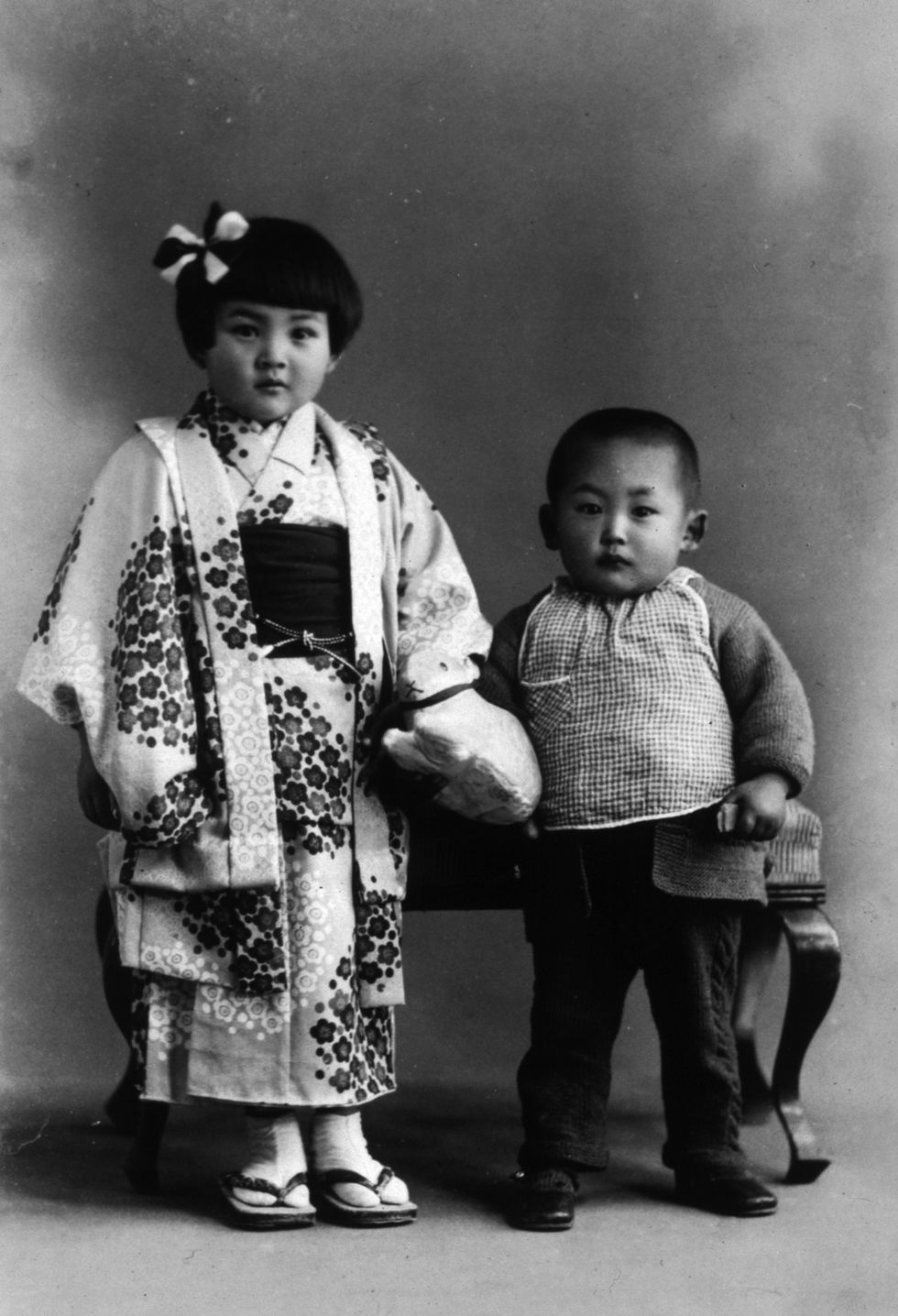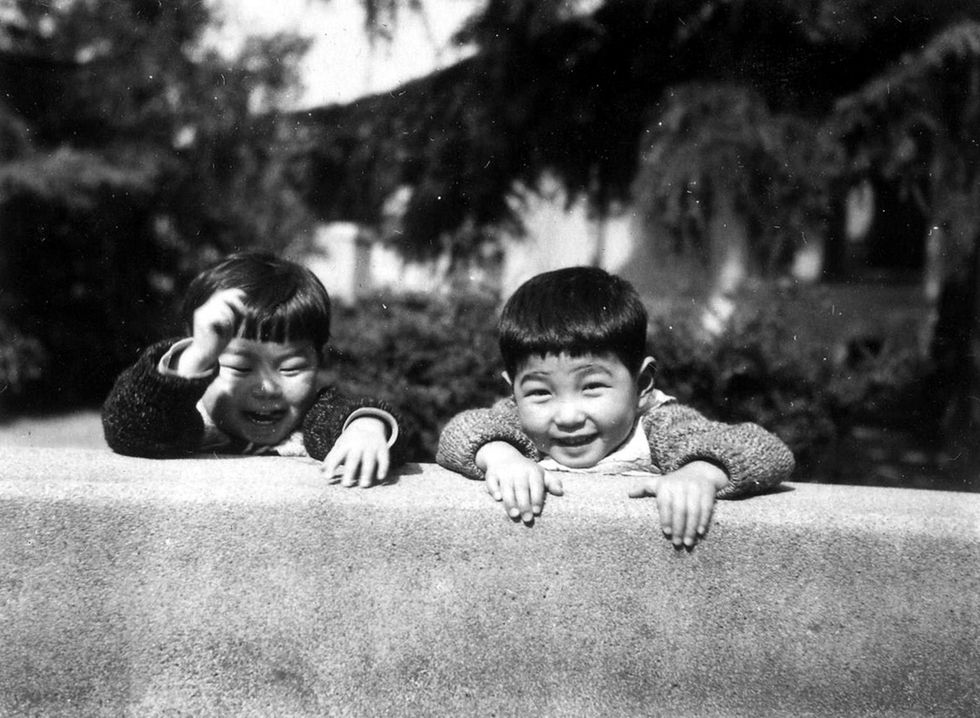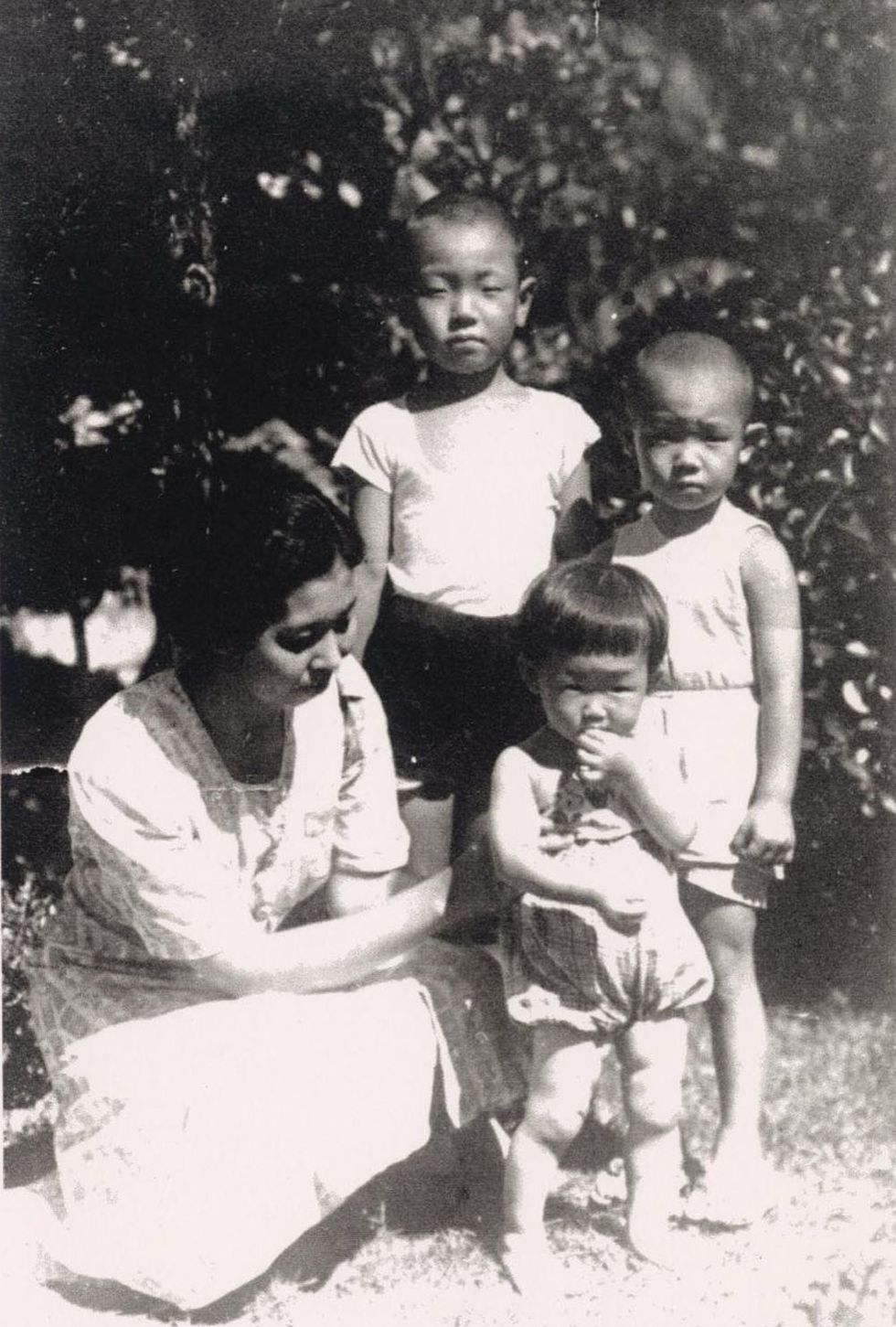

SUBSCRIBE TO OUR FREE NEWSLETTER
Daily news & progressive opinion—funded by the people, not the corporations—delivered straight to your inbox.
5
#000000
#FFFFFF
To donate by check, phone, or other method, see our More Ways to Give page.


Daily news & progressive opinion—funded by the people, not the corporations—delivered straight to your inbox.
As we try to gather our forces and articulate a shared progressive vision, we should take hold of FDR's words to inspire and encourage our labors and struggles.
The democratic achievements of the "Long Age of Roosevelt" (1930s-1960s) have been under siege by corporate bosses, conservatives, and neoliberals for 50 years—and the walls defending them have now been breached. As we try to gather our forces and articulate a shared progressive vision, we should take hold of FDR's words to inspire and encourage our labors and struggles.
With escalating military confrontations today—even the possibility of a World War—how long can “deterrence” work?
Eighty years ago, the U.S. dropped nuclear bombs on the civilian populations of Hiroshima and Nagasaki. There are now nine nuclear-armed nations, many in military confrontation with one another. It is quite remarkable that there has not been another nuclear war. How can this be explained?
Some say the absence of another nuclear war proves that nuclear “deterrence” is working, and to some extent that is true. These nations are rightfully afraid of a nuclear conflagration, which could obliterate their societies, and even destroy all life on planet Earth. With escalating military confrontations today—even the possibility of a World War—how long can “deterrence” work?
“So far so good” is probably the faintly hopeful refrain heard from many who feel helpless to undo the nuclear danger. This is reminiscent of the cartoon of the man falling from the top of a building. As he passes each descending floor, he proclaims, “So far, so good…”
In reality, a fair amount of luck has helped humanity avert nuclear catastrophe until now. We came very close during the “Cuban Missile Crisis.” A political officer on a Russian submarine that was out of communication and uncertain if a nuclear war had already begun called off a missile launch at the last minute. Another Russian military technician, suspicious of an errant radar reading that appeared to show incoming U.S. missiles, called off another imminent nuclear strike. It could just as easily have gone the other way.
Many experts worry that it will be an accidental nuclear launch that ends us. This is all the more concerning as Artificial Intelligence is applied to nuclear weapons on hair-trigger alert, decreasing the decision-making time to split seconds, and removing human oversight. What could go wrong?

2025 also marks 80 years from the end of World War II and the defeat of the German fascists by Russia, the United States, and the European Allies. Eighty years since Russian and U.S. troops liberated thousands of skeletal prisoners from German concentration camps, much to the horror of the world, which reacted with calls of “Never Again!”
But wait, don’t we have concentration camps now in the U.S.? Isn’t that why Immigration and Customs Enforcement (ICE) now has a larger budget than many national militaries, and larger than the entire current federal prison system? They are building concentration camps for undocumented workers, whom they demonize as “murderers,” “rapists,” “gang members,” and “terrorists.” The vast majority of immigrants who have already been violently taken from their jobs and families, imprisoned, and deported have no criminal records whatsoever, and are productive, respected members of their communities.
If you think I am pointing the finger at the U.S. as the “bad guy” who is mostly responsible for the prospect of a civilization-ending nuclear war, then you are reading correctly.
Authoritarianism with distinct overtones of white supremacy is on the rise once again, while craven European politicians clamor for war with Russia and more military spending. What could go wrong?
Israel, purportedly a safe haven for the persecuted Jewish people—a “land without people for a people without land”—is escalating its blatant genocide in Gaza. The images of intentionally starved Palestinian men, women, and children conjure images of emaciated prisoners—mostly Jews—in World War II concentration camps.
Israel is also a nuclear power, although it has long been considered impolite to say so. The United States helped Israel gain nuclear technology and has helped to shield Israel from any nuclear accountability. Israel has not signed the Nuclear Non-Proliferation Treaty (NPT). Its nuclear arsenal is not inspected by the International Atomic Energy Agency (IAEA), which the U.S. weaponized to support its rationale for war against Iraq, Syria, and Iran. The IAEA announced a resolution critical of Iran’s nuclear program on Thursday, June 12, the day before Israel’s attack on Iran. Coincidence? Probably not. Like so many other international bodies, the IAEA has been subverted to serve U.S. and Israeli war aims.
Unlike Iran, Israel actually has nuclear weapons. Will they use them against Iran? The Israeli government of right-wing extremists has already shown us the depths of depravity they are willing to go. Furthermore, all their Arab neighbors know Israel is the only nuclear-armed nation in the Middle East.
Daniel Ellsberg, author of The Doomsday Machine: Confessions of a Nuclear War Planner, reminded us that “nuclear weapons are used every day. They are like a gun you point at somebody’s head.”
Aside from “luck,” it has been nuclear arms treaties that have held nuclear war in check. In recent years, however, the U.S. has shredded most of these treaties and missed many opportunities for peace:
Taken in their totality, these U.S. moves constitute an attempt to gain nuclear superiority, including the possibility of launching a First Strike nuclear attack. Pulling out of the ABM and INF treaties, in particular, indicate U.S. intentions to threaten Russia with nuclear war.
Is it any wonder that Russia, faced with the prospect of the U.S.-North Atlantic Treaty Organization troops and nuclear weapons systems stationed on its border with Ukraine, felt compelled to take military action? Now Russia is stuck in a bloody war that has been constantly escalated by the U.S., which has rejected multiple opportunities for peace talks since the war began. Russia asked for neutrality for Ukraine and respect for the rights of Ukraine’s Russian-speaking populations. Over 1 million casualties later (both sides), the bloody trench-and-drone war drags on, not because of Russian intransigence, but because of the aggressive U.S. policy of “full-spectrum dominance” in every corner of the globe.
On June 1 of this year, a U.S.-supported Ukrainian drone attack on nuclear bombers in Russia almost triggered a nuclear war. According to a Russian general who spoke with former Central Intelligence Agency (CIA) geopolitical analyst Larry Johnson, the world was even closer to nuclear war than during the Cuban Missile Crisis. The Russian bombers were openly visible on the tarmac, in accordance with the New START Treaty, which is designed to prevent a nuclear-first strike by either Russia or the U.S. This last remaining nuclear arms control treaty between the U.S. and Russia is due to expire this coming February. But it already has been drone bombed.
News Flash! President Trump just posted on his Truth Social account that he is sending two nuclear-armed submarines closer to Russia. Why? Because he didn’t like something that Russia’s Dmitri Medvedev said on social media. What? Trump is scoring pissing points by playing with nuclear weapons? A narcissistic psychopath has his hand on the nuclear button. This is all the more reason to push for an end to the president’s sole authority to launch a nuclear war.
To round out this bleak report, we must at least mention that the U.S. is planning for war against China. The United States is openly planning to wage a war against China—some say as soon as 2027. Why? Because China’s remarkable revolution from extreme poverty to becoming a prosperous global powerhouse is something that the U.S. ruling class (or “deep state”) will not accept. So China will not be attacked because of its military aggression. Even as the U.S. wages perpetual war on multiple countries, China has not been at war with anybody in this century. U.S. complaints about Taiwan are nothing more than an excuse, a trigger for the war that U.S. leaders are determined to wage, at all costs.
The Pentagon has figured out that it cannot win a conventional war against China, however. It is planning to use nuclear weapons—an overwhelming first strike or possibly only “tactical nuclear weapons,” those cute little guys that are several times more powerful than what was dropped on Hiroshima.
U.S. war planners recently asked Australia and Japan to declare what military resources they will bring to bear in a war against China. And get this… the U.S. held talks with Japan, of all nations, to discuss how they will coordinate their efforts after a nuclear strike on China. Among the issues they discussed were how they could best manage public opinion after a nuclear war.
It is mostly by dumb luck, however, that we have not all perished in a nuclear Armageddon already.
So if you think I am pointing the finger at the U.S. as the “bad guy” who is mostly responsible for the prospect of a civilization-ending nuclear war, then you are reading correctly. To put it bluntly, the problem is U.S. imperialism. The waning U.S. empire, desperate to maintain its hegemony and expand it, is the elephant in the room. It is buttressed by a very large and powerful military-industrial complex (MIC), the one that former President Dwight Eisenhower warned us about—now on steroids. Ray McGovern of Veterans Intelligence Professionals for Sanity (VIPS), a former CIA analyst himself, has expanded the MIC acronym to MICIMATT (Military Industrial Congressional Intelligence Media Academia Think Tanks). Yes, they are all complicit, not just with genocide in Palestine, but with militarizing and destroying the world. We peace-loving people have our work cut out for us. We are up against a lot.
There is a lot of money to be made from war and militarism. And politicians learn the advantages of justifying war and funding the war machine. The ever-growing Pentagon budget has ballooned to over $1 trillion under Trump, money that will be redirected from the social security net that is being systematically shredded. Spending on nuclear weapons “modernization” alone will cost $100 billion in just the next year (from the budgets of the Pentagon and the Department of Energy).
For decades, peace activists, scientists, and others have been warning us about the “growing danger of nuclear war.” Those sounding the nuclear alarm have been treated like the proverbial fanatic with the sign, “The End Is Near,” or like Chicken Little—“The sky is falling.” It is mostly by dumb luck, however, that we have not all perished in a nuclear Armageddon already. The guard rails have been removed, with the U.S. abrogation of nuclear arms deals. There are very few “adults in the room,” certainly not in the U.S., where neocons who love Israel but hate Iran and Russia have seized the helm. It will take a miracle and a lot of activism to avoid utter disaster in the relatively near future.
Many peoples are already experiencing disaster, what with wars, genocide, extreme poverty, starvation, and the climate crisis—the fruits of corporate greed and militarism. Many people also suffer from the poison of the entire nuclear cycle. There are 15,000 abandoned uranium mines in the Western U.S., many of them on First Nations lands. Radiation contaminates the water, the air, the land, and the people, who suffer from many cancers and radiation-related diseases.
Then there are the “downwinders” who suffer from the radiation of nuclear bomb testing. Or worse. The Marshall Islands were devastated by nuclear bomb testing. From 1946 to 1958, the U.S. detonated 67 nuclear bombs on this island nation in the middle of the Pacific Ocean. To add insult to injury, their islands are now “sinking” from global warming and rising seas. Many Marshallese, unable to grow food on radiated land and unable to eat the fish from radiated waters, have been allowed to live in the U.S., without citizenship or security, and denied healthcare by many states. There is no cancer treatment facility in the Marshall Islands, and no Veterans Affairs facility for its many veterans of the U.S. military.
We will end this disturbing nuclear tour on a positive note. It has to do with the Marshall Islands. In 1958, four Quaker peace activists bought a sailboat and announced to the world their intention to sail from Los Angeles 4,000 miles into the nuclear test zone in the Marshall Islands to stop U.S. nuclear testing. They were led by Albert Bigelow, a World War II Navy commander who resigned his commission in protest of the U.S. nuclear bombings in Hiroshima and Nagasaki.
Halfway through the voyage, when Bigelow and his intrepid crew pulled into Honolulu, they were arrested and thrown in jail and the Coast Guard seized their boat, named Golden Rule. They never made it to the Marshall Islands, but they succeeded in bringing worldwide attention to the danger of radiation that was floating all over the globe, even getting into mothers’ milk. Opposition to nuclear testing led to the Limited Test Ban Treaty of 1962, signed by then-President John F. Kennedy and the leaders of Russia and the United Kingdom. The treaty banned nuclear testing in the atmosphere, in the water, and in space. Only underground tests were permitted. These days most nuclear testing is done using computer simulations.
The remarkable saga of the Golden Rule continued. The 34-foot ketch was sold and sailed as a pleasure boat by several families to the South Pacific and the Caribbean. Somehow, in 2010 it was found in Humboldt Bay in northern California—a derelict boat that had sunk in a gale and had a big hole in its side. Some locals dragged the beat-up boat onto the beach and planned to make a bonfire of it. When a someone discovered the boat’s legacy, however, local members of Veterans For Peace rescued it and decided to restore it to its original glory.
In June of 2015, after five years of dedicated volunteer labor by veterans, Quakers, and boat lovers, the Golden Rule splashed back into the waters of Humboldt Bay and began sailing up and down the West Coast from British Columbia to Mexico (Ensenada), then to Hawai’i and all around the Hawai’ian islands. Back to California, trucked to Minneapolis, sailed down the Mississippi to the Gulf of Mexico, to Cuba and up the East Coast to Toronto and back to Chicago, a 12-month voyage with a total of 102 port stops. At every stop the Golden Rule and its crew were welcomed excitedly by local peace and environmental activists as well as by state and local officials. Nobody wants a nuclear war!

The historic Golden Rule peace boat sailed last week from its homeport in Humboldt Bay to San Francisco Bay, where it will spend the month of August educating the public about the “growing danger of nuclear war,” and the importance of supporting the U.N. Treaty on the Prohibition of Nuclear Weapons (TPNW). The treaty, supported by an overwhelming majority of countries, went into force in January 2021. It prohibits nations from developing, testing, producing, manufacturing, transferring, possessing, stockpiling, using, or threatening to use nuclear weapons, or allowing nuclear weapons to be stationed on their territory. It also prohibits them from assisting, encouraging, or inducing anyone to engage in any of these activities
The Golden Rule is a national project of Veterans For Peace, a 40-year-old organization dedicated to exposing the true costs of war; to restraining our government from intervening, overtly and covertly, in the internal affairs of other nations; and to ridding the world of nuclear weapons. At its recent national convention, veterans from U.S. wars in Vietnam, Iraq, Afghanistan, and recent deployments made a united call for opposition to the U.S.-backed Israeli genocide in Gaza and for resistance to racist ICE attacks in our own communities. While calling for the abolition of nuclear weapons, the Golden Rule will be echoing these urgent cries for “Peace at Home, Peace Abroad.”
Although denaturalization rates have declined over the past several decades, there is ample historical precedent for the revival U.S. President Donald Trump is planning.
There are nearly 25 million naturalized citizens in the United States, accounting for 7% of the total population. Each and every one of them should be laser-focused on the Trump administration’s plans to denaturalize and deport as many of them as possible.
Denaturalization is the process by which the federal government revokes the citizenship of persons born outside of the country who became citizens by meeting the standards set by Congress in the Immigration and Nationality Act, which include swearing an oath of allegiance to the United States, and demonstrating “good moral character.”
Although denaturalization rates have declined over the past several decades, there is ample historical precedent for the revival U.S. President Donald Trump is planning. Between 1906 and 1967—when the Supreme Court stepped in to tighten the legal requirements—more than 22,000 Americans were denaturalized. Many were left-wing activists who were singled out during the two Red Scares of the 20th century. A common method to denaturalize them was to accuse them of fraud in taking their oaths of allegiance. In 1919, in perhaps the most famous case of all, the government deported Emma Goldman to Russia under the Anarchist Exclusion Act after revoking her naturalized citizenship. In the 1950s, the government tried but failed to denaturalize labor leader Harry Bridges.
On June 11, Assistant Attorney General Brett Shumate wrote a memorandum that lists denaturalization as one of the Department of Justice’s (DOJ) top legal objectives to further Trump’s political goals. The memo was directed to the DOJ’s Civil Division, the department’s largest litigating component, which represents the United States and its executive agencies, members of Congress, cabinet officers, and other federal employees in thousands of legal matters each year. It instructed the division’s attorneys to “prioritize and maximally pursue denaturalization proceedings in all cases permitted by law and supported by the evidence,” focusing on 10 broad categories of enforcement actions:
1. Cases against individuals who pose a potential danger to national security, including those with a nexus to terrorism, espionage, or the unlawful export from the United States of sensitive goods, technology, or information raising national security concerns;
2. Cases against individuals who engaged in torture, war crimes, or other human rights violations;
3. Cases against individuals who further or furthered the unlawful enterprise of criminal gangs, transnational criminal organizations, and drug cartels;
4. Cases against individuals who committed felonies that were not disclosed during the naturalization process;
5. Cases against individuals who committed human trafficking, sex offenses, or violent crimes;
6. Cases against individuals who engaged in various forms of financial fraud against the United States (including Paycheck Protection Program [“PPP”] loan fraud and Medicaid or Medicare fraud);
7. Cases against individuals who engaged in fraud against private individuals, funds, or corporations;
8. Cases against individuals who acquired naturalization through government corruption, fraud, or material misrepresentations, not otherwise addressed by another priority category;
9. Cases referred by a United States Attorney’s Office or in connection with pending criminal charges, if those charges do not fit within one of the other priorities; and
10. Any other cases referred to the Civil Division that the Division determines to be sufficiently important to pursue.
The first nine categories are generally consistent with the government’s existing powers, reflecting Trump’s penchant for exploiting the loopholes and weak links in current law whenever feasible. The 10th category, however, is a wildcard that could expand those powers exponentially and lead to a Red Scare encore.
And as dark and dangerous as that possibility sounds, it may be perfectly legal.
Article I, Section 8, Clause 4 of the Constitution grants Congress the power to establish a “uniform Rule of Naturalization.” Pursuant to this authority, Congress passed the first naturalization act in 1790, and ratified additional acts well into the late 19th century. But it was not until the passage of the Naturalization Act of 1906 that Congress federalized naturalization procedures. The act incorporated earlier race-based legislation that limited naturalization to white people and those with African origins. It also created the Bureau of Immigration Services, the precursor of the present-day U.S. Citizenship and Immigration Services agency, which promulgated uniform application forms, and began the process of moving naturalization jurisdiction to the federal courts. (Prior to 1906, immigrants were able to apply for citizenship before any court of record, including state and municipal courts. In 1990, Congress shifted jurisdiction from the federal courts to the executive branch, where it remains to this day, although naturalization ceremonies are still conducted by federal district court judges.)
The Naturalization Act of 1906 was also the first federal law that provided for denaturalization, centered on individuals who had obtained citizenship by fraud, were racially ineligible, and lacked “good moral character.” The act was amended on several occasions, most notably in 1952 by the McCarthy-era McCarran-Walter Act, which added provisions for denaturalization based on activities deemed subversive or connected to communist or communist-front organizations.
Even if Trump’s threats against O’Donnell, Musk, and Mamdani are basically performative, thousands of less affluent naturalized citizens will likely be caught up in the coming denaturalization dragnet.
Today’s denaturalization procedures are set forth in two sections of Title 8 of the U.S. Code. Section 1451 authorizes the Department of Justice to institute civil proceedings, alleging that citizenship was “illegally procured” or obtained “by concealment of a material fact or by willful misrepresentation.” The section also mandates denaturalization for individuals who refuse to testify before a congressional committee concerning their alleged subversive activities in cases where they have been convicted of contempt for such refusals.
Section 1425 of Title 8 authorizes criminal prosecutions, making it a felony punishable by 25 years in prison to knowingly procure, “contrary to law, the naturalization of any person.” A conviction results in automatic denaturalization.
Once denaturalized under either section, a person returns to their immigration status before becoming a citizen, rendering them vulnerable to deportation.
It’s easy to see why Trump and his advisers have opted to emphasize civil denaturalization proceedings over criminal prosecutions. In civil cases, there is no right to a jury trial or court appointed counsel, and there is no statute of limitations. The standard of proof is also lower. According to the Supreme Court’s precedent decisions, to prevail, the government must present “clear, convincing, and unequivocal evidence” that the targeted individual obtained citizenship illegally or willfully misrepresented a material fact during the naturalization process. That is a rigorous test, but one far lower than the “beyond a reasonable” doubt standard for criminal prosecutions.
The first Trump administration attempted to make denaturalization a priority, launching an initiative dubbed “Second Look,” which built upon a similar Obama administration program called “Operation Janus” to identify alleged terrorists and fraudsters who had naturalized. In the end, however, Trump 1.0 filed a mere 102 denaturalization cases, amounting to an annual rate higher than the 16 cases per year filed under former President Barack Obama, and eclipsing the total of 24 cases filed under former President Joe Biden, but still miniscule. This time around, Trump 2.0 is pledging to bring the resources of the entire DOJ civil division behind the effort, reviving the specter of mass denaturalization.
The Shumate memo had largely flown under the media’s radar until Trump started talking in early July about deporting former best bro Elon Musk and New York City mayoral candidate Zohran Mamdani, and stripping comedian and longtime celebrity nemesis Rosie O’Donnell of her citizenship.
O’Donnell, who is seeking dual citizenship in Ireland, appears safe from Trump’s clutches as she was born in Commack, New York, and enjoys birthright citizenship under the 14th Amendment. Even Trump’s January executive order attacking birthright citizenship for the children of undocumented immigrants would leave her unscathed.
Musk and Mamdani are another story, as both are naturalized citizens. Musk, born in South Africa, naturalized in 2002. Mamdani, born in Uganda to Indian parents, naturalized in 1998. Musk allegedly worked illegally in the U.S. in violation of his student visa after leaving Stanford University in 1995. Mamdani has been accused of posting comments on X quoting rap lyrics suggesting support for Hamas.
Even if Trump’s threats against O’Donnell, Musk, and Mamdani are basically performative, thousands of less affluent naturalized citizens will likely be caught up in the coming denaturalization dragnet. Millions more who are not targeted will be intimidated from exercising their First Amendment rights to free speech and full political engagement. The net result will be a society less diverse and less free for the vast majority, exactly what Donald Trump and his cohorts want.
The fact that children would suffer the greatest harm of all in the event of a nuclear attack against a city today should have profound implications for policy-making in nuclear-armed states and spur action for disarmament. And yet the world's nuclear-armed states continue to withhold their support for abolition.
Before dawn on August 6, 1945, Tsuyako Kubota gave birth to her second daughter at her home in Hiroshima’s Nishikanon neighborhood. A few hours later, in a blinding flash, much of the city was reduced to smoldering ruins by a single atomic bomb.
The young mother, her newborn baby and her two-year-old daughter, Sumie, became trapped in the wreckage of their home. The girls’ father, Minoru, a Japanese-American from Hawaii, tried desperately to free them.
“Sumie was crying,” he recalled. “She said to me, ‘Daddy, it’s hot! The fire is coming! My hands are burning!’ There was a final scream, and then I couldn’t hear her voice anymore.”
Sumie and her hours-old sister—who was never given a name—were among the estimated 23,000 children killed in the U.S. atomic bombing of Hiroshima 80 years ago this week. A further 15,000 perished in the attack on Nagasaki three days later.
“She said to me, ‘Daddy, it’s hot! The fire is coming! My hands are burning!’ There was a final scream, and then I couldn’t hear her voice anymore.”
Their deaths, and those of tens of thousands of other civilians, challenge official narratives in the West that the use of nuclear weapons against the two Japanese cities in the final days of World War II was morally justified.

A new poll by the Pew Research Center shows that U.S. public support for the attacks is declining. In 1945, it was as high as 85 percent. Today, only around 35 percent of Americans believe their government’s actions were justified, with 31 percent believing they weren’t. The other third are unsure.
…
With few exceptions, those who survived the atomic bombings and are still alive were children at the time. Through their young eyes, they witnessed unimaginable horror. Known in Japanese as hibakusha, many have devoted their lives to the cause of nuclear disarmament, sharing their first-hand testimonies time and again in the hope of avoiding a recurrence of such tragedies. Their warning is stark: humanity and nuclear weapons cannot coexist.
Last December, their efforts were recognized with the Nobel Peace Prize awarded to Nihon Hidankyo, or the Japan Confederation of A- and H-Bomb Sufferers Organizations.
Their warning is stark: humanity and nuclear weapons cannot coexist.
Many of the survivors lost their parents, siblings, and friends. They have suffered lifelong physical and psychological trauma. Some have endured multiple surgeries to treat painful keloid scars, extract glass fragments embedded deep in their bodies, or remove cancers caused by their exposure to the bombs’ radiation.

In a nuclear attack, children are especially vulnerable, as their skin is more delicate and their bodies frailer, and they have more cells that are growing and dividing rapidly and thus more susceptible to radiation effects. They are significantly more likely than adults to die from burns, blast injuries, and acute radiation sickness.
As the late paediatric endocrinologist Michael S. Kappy explained in a 1984 paper, “Children and adults do not share equally the dreadful short-term effects of ‘the bomb’, and it is clear from all available data that children are also most susceptible to the long-term effects that appear after varying latency periods.”
The disproportionate impact of nuclear weapons on infants and children was underscored in a declaration adopted this March by the 73 countries that have so far ratified or acceded to the landmark 2017 Treaty on the Prohibition of Nuclear Weapons.
In a nuclear attack, children are especially vulnerable, as their skin is more delicate and their bodies frailer, and they have more cells that are growing and dividing rapidly and thus more susceptible to radiation effects.
The fact that children would suffer the greatest harm of all in the event of a nuclear attack against a city today should have profound implications for policy-making in nuclear-armed states and spur action for disarmament. Yet, all nine such states continue to act contrary to that objective. And the risk of a nuclear weapon being used again appears to be at an all-time high.
…
In Hiroshima, thousands of school students were outdoors creating firebreaks on the morning of the atomic bombing. Completely unshielded from the bomb’s effects, they stood little chance of survival. The mortality rate for those within one kilometre of the hypocentre was around 94 percent. Approximately 6,300 of them died.
Many parents spent days or weeks searching for their missing children in the aftermath. For some, not knowing their children’s fate became unbearable. One mother in Hiroshima, refusing to accept her daughter’s death, kept a door or window open for the rest of her life in case she one day returned home.

Some parents managed to identify the charred, swollen bodies of their children among scores of corpses only by the name tags on their clothes. Others found their children alive and nursed them for days, weeks or months until they took their final breaths. More than a few expressed guilt at the inadequacy of their care amid extreme shortages of medicines and food.
In Nagasaki, one mother watched as four of her children succumbed to acute radiation poisoning one after another. “I kept thinking that human beings shouldn’t die so easily,” she reflected.
Another Nagasaki mother’s face was so badly burnt and disfigured in the attack that her grievously injured two-year-old son couldn’t recognize her as she cared for him in his dying moments.
Some children appeared unharmed at first, having sustained no burns or other visible injuries, but developed fatal diseases years later, as ionizing radiation had entered their bodies and altered their cells.

One such child was Sadako Sasaki, a toddler at the time of the Hiroshima bombing. She died a decade later from acute malignant lymph gland leukemia. During her hospitalization, she folded over a thousand paper cranes with her weak and skinny arms in the hope it would bring her good health.
“Until her very last moment, she held onto her wish and made a great effort to survive,” her father remembered. “I loved her so much that I couldn’t come to terms with her death for a long time.”
Sadako’s tragic story continues to inspire children in Japan and throughout the world to work for the abolition of nuclear weapons—an increasingly urgent task given deteriorating relations among nuclear-armed states and the enhancement and expansion of their arsenals.
It is estimated there are more than 12,000 nuclear weapons in the world today, most of them vastly more powerful than the atomic bombs dropped eight decades ago. In the words of the UN Secretary-General, António Guterres, “They offer no security—just carnage and chaos. Their elimination would be the greatest gift we could bestow on future generations.”